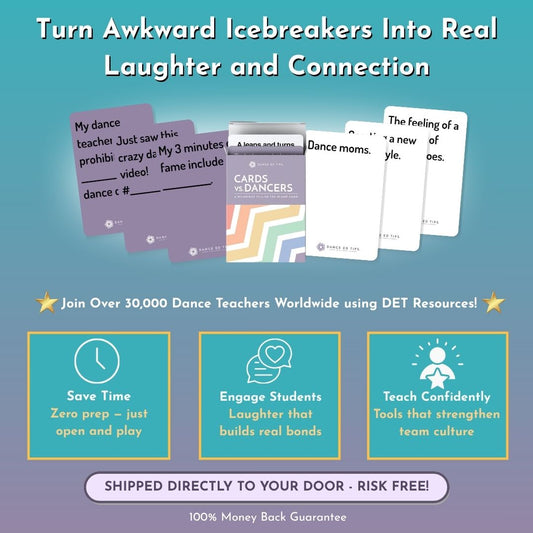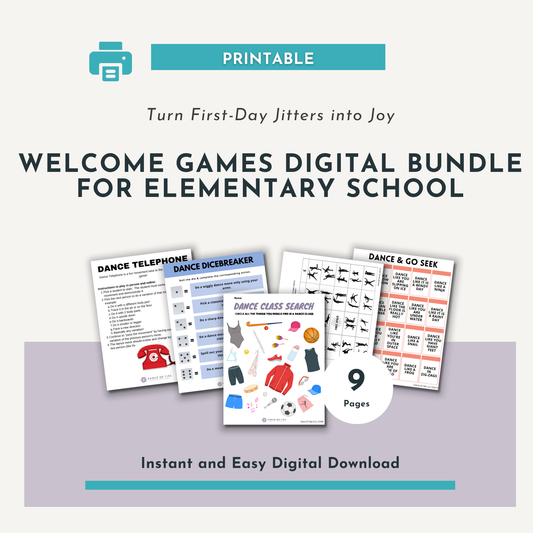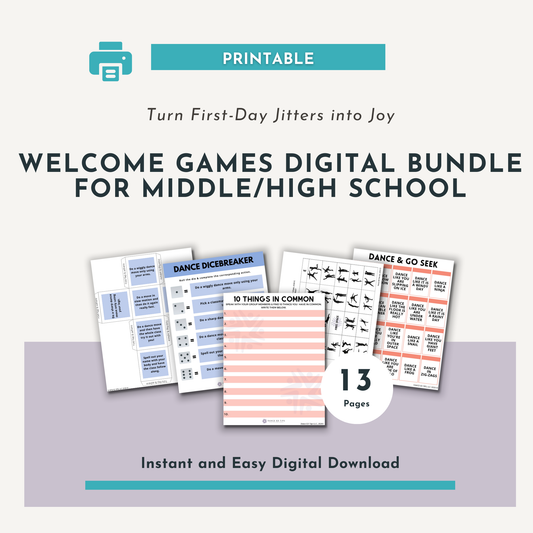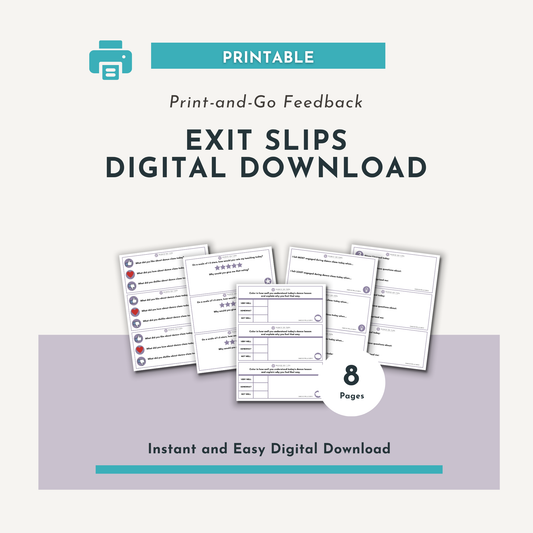By: Christine Reed
As you embark on your summer curriculum planning in preparation for next school year and dance season (or take some well deserved time to yourself), I want to share with you some literary resources to bring into your dance class. Maybe you’ll find one you love, or want to introduce to your students, and you can sit back and enjoy a good book while you lesson plan!
All of life can be told through a story. And I find when those stories are brought into the dance studio, it helps students bring stories to life on stage. Literature, in any class, brings multiple benefits. Not only does literature engage learners, but it also makes class content relevant, helps learning stick and become memorable, and connects our work to the rest of the world.
Some may believe that reading in dance class will take away time from students developing their craft, but I find when using literature in dance class, it only enhances their learning. Students’ imaginations become limitless, their creative problem solving skills develop, and their movement becomes more authentic. When exactly should you use literature in the dance studio? That is up to you! I use literature to support a variety of learning objectives and therefore bring literature in dance class at a variety of times. Three main reasons I use literature include supporting the teaching of dance elements and universal dance concepts; enhancing lessons on dance history, technique and choreographer studies through reading about specific dance genres, choreographer biographies, and the history of dance; and supporting students’ social emotional learning. Below are some of my favorites within each of these three categories.
BOOKS THAT CONNECT TO DANCE ELEMENTS & CONCEPTS:
Dance! With Bill T. Jones by Jones and Kuklin is a simple, yet beautiful, introduction to dance and many elements within conceptual dance education. I love this book for many reasons, including the fact that it not only explores dance elements of body and space (shape, line, level, size), but also explains to readers what we do in dance class (first we warm-up). The best part about this text is that it is beautifully illustrated throughout with photographs of Bill T. Jones in many different dance positions. When we read this book, in addition to covering dance elements, my students and I end up creating the amazing shapes in the photographs and utilizing those in various choreographic games.
I Got the Rhythm by Connie Schofield-Morrison is a feel good story about a girl who feels the joy of music all around her. It is an excellent introduction to the element of time, including concepts of rhythm, beat and tempo. In conjunction with this book, my students and I often play “Catch that Rhythm,” a call-and-response game in which students replicate with their bodies a rhythm that the teacher plays on a drum or through clapping. Or we play “Tempo Tag,” a game of tag in which students must walk, run or dance to the speed of the drum. Both games reinforce the concepts of tempo and rhythm, which pair well with this entertaining story.
Like a Windy Day by Frank Asch is a colorful book that explores the qualities of wind. Throughout the book, Asch uses multiple action words to describe things that move in the wind, such as “scatter seeds,” “snap wet sheets,” or “zoom down hillsides.” This book lends itself so easily to movement. When utilizing this book in dance, I do a read-aloud first, we discuss the action words we heard, we read the story again while trying each action through improvisation, students practice and develop their locomotor movement skills trying these actions across-the-floor, students explore movement like the wind while moving scarves with strong and light qualities, and finally students use all of what they learned to create their own wind dances.

BOOKS THAT EXPLORE DANCE HISTORY & TECHNIQUE:
The Library of American Choreographers biography series on famous American choreographers is a great addition to any classroom library. These books, suitable for readers in grades 5th-8th, explore the life and impact of choreographers including Alvin Ailey, Martha Graham, Agnes de Mille, Bob Fosse, Jose Limon, George Balanchine, Jerome Robbins, and Twyla Tharp. My students and I utilize these books when learning a specific dance style, and when investigating dance history within those classes.
A Child’s Introduction to Ballet: The Stories, Music, and Magic of Classical Dance by Laura Lee is a favorite of mine when working with students on ballet. This comprehensive book shares facts about the history of ballet, specific ballet terminology, how-to’s for ballet steps, stories within famous ballets, and information on influential ballet choreographers and dancers. Illustrated to capture the attention of young readers and dancers, this book is also coupled with a music CD full of a selection of music to pair with ballet warm-ups and ballets explored in the book. This is a text I use while teaching, as well as one I have available for students to discover the magic of ballet on their own during centers time or open studio time.
When the Beat was Born: DJ Kool Herc and the Creation of Hip Hop by Laban Carrick Hill is a great exploration of hip-hop music and dance, as well as other elements of Hip-Hop culture. This book chronicals the life of DJ Kool Herc and the start of Hip-Hop. This book is a great introduction to hip-hop culture, giving factual information in a fun way with creative writing and interesting illustrations. This text is perfect for students in grades 2nd-4th grades that are first beginning to learn specific dance styles and may have an interest in hip-hop!

BOOKS THAT SUPPORT SOCIAL AND EMOTIONAL LEARNING:
Howard B. Wigglebottom Learns About Courage by Howard Binkow and Reverend Ana is my go-to book to introduce the concept of being BRAVE to my dancers. Bravery and courage take many forms, such as when Howard sees the spiders at the zoo, plays with dogs outside, or faces his biggest fear head-on: the first day of school. While none of Howard’s feats are dancing on stage or in front of an audience, the message is universal: It is okay to be afraid. Howard teaches us that we should take on any fear, and that those fears make us stronger and are how we become courageous. I recommend this book for any class and any content, as it can be relatable for anything: being an up-stander against bullies, being brave readers as you are learning, going out of your comfort zone in social situations, and so much more!
When working to include Social and Emotional Learning (SEL) competencies in your teaching, literature that promote self-awareness and social-awareness are a must. I Am Enough by Grace Byers is the perfect text to use when diving into topics of self-acceptance, respect for others, and loving yourself and our diverse world.
Another text that promotes acceptance, while reminding readers to always be true to yourself is Red: A Crayon’s Story by Michael Hall. In this creative, funny book, Hall takes us through the journey of a crayon who is mislabeled as red, but really is a beautiful blue! This book not only hits home for anyone who may be trans, but is relatable for anyone combating stereotypes based on gender, race or other social and demographic markers. Red tells us that it is better to be yourself, stick true to who you are, and be proud of that, than to conform to what other people expect or want from you.
Pink is for Boys by Robb Pearlman is another great text that encourages students and adults alike to be true to who they are, and to celebrate what they love and like to do! A beautifully illustrated book, Pink is for Boys challenges the typical gender binary and reminds us of how all the colors of the rainbow are for everyone.






